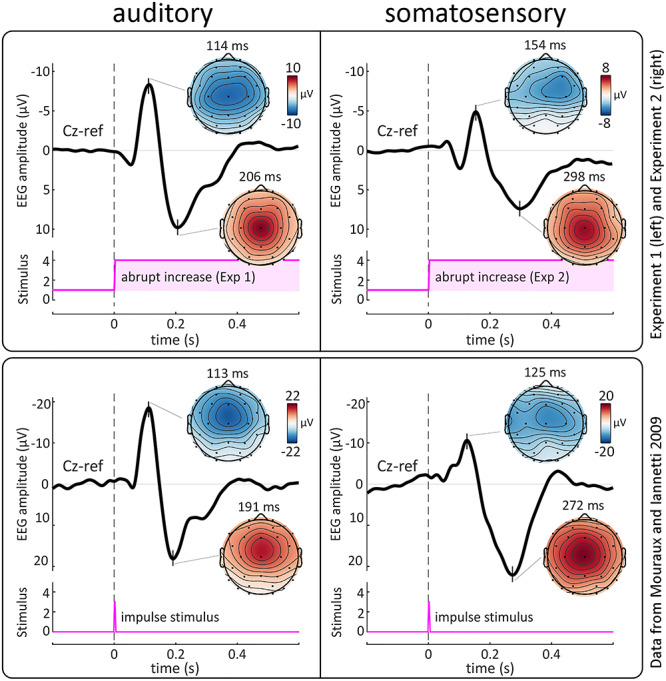Figure 2.

Experiments 1 and 2: abrupt intensity increases embedded in ongoing stimuli elicit VPs remarkably similar to those commonly evoked by impulse stimuli. Top panel: grand average EEG responses elicited by abrupt increases of intensity of continuous auditory (left) and somatosensory (vibrotactile, right) stimulation. Data from Experiments 1 and 2. Bottom panel: grand average EEG responses to auditory (left) and somatosensory (electrical, right) impulse stimuli. Data from Mouraux and Iannetti (2009). In both panels the EEG amplitude timecourse at Cz is shown in black. Vertical dashed lines indicate stimulus onset. Pink plots show stimulus profiles. Scalp topographies are shown at the peak latency of the negative and positive VPs. Note how abrupt intensity increases embedded in ongoing stimuli elicit VPs (top panels) remarkably similar to those elicited by commonly used impulse stimuli (bottom panels). Note also the longer latencies of the N and P waves elicited by vibrotactile stimuli (top panel, right) compared to electrical stimuli (bottom panel, right), given that electrical stimulation bypasses the mechanoreceptors and directly activates axons of Aβ afferents.
